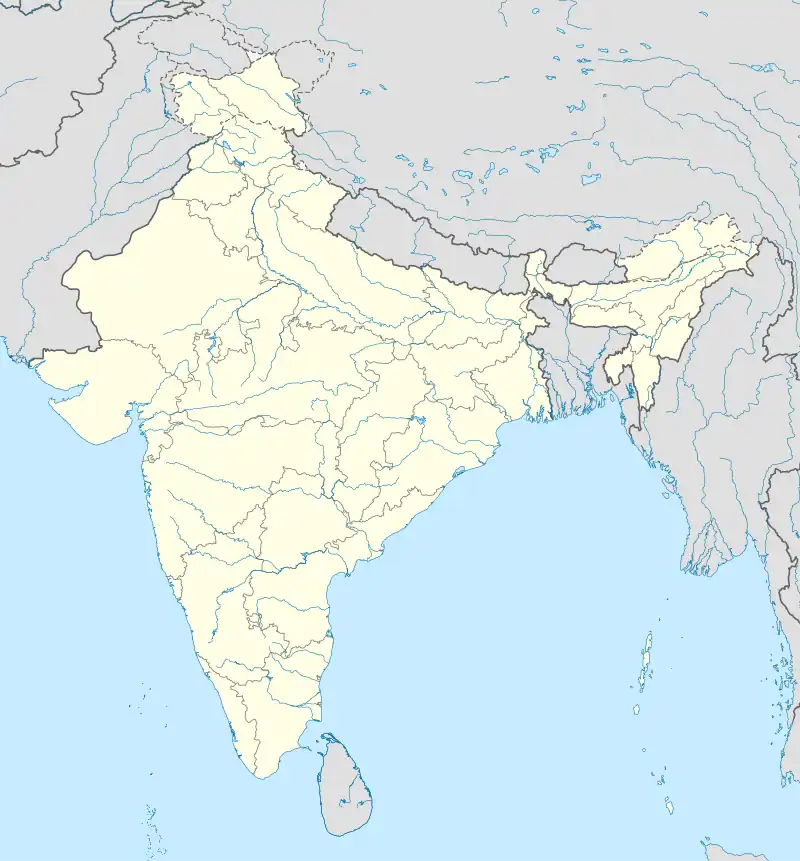Ghoghla
Gogolá[1] | |
|---|---|
Village | |
_1934.jpg.webp) Map of Diu showing Gogolá | |
 Ghoghla | |
| Coordinates: 20°43′37″N 70°59′18″E / 20.72694°N 70.98833°E | |
| Country | |
| UT | DNDD |
| District | Diu |
| Sub-district | Diu Island |
| Established | 1539[2] |
| Government | |
| • Type | Panchayat |
| Area | |
| • Total | 1.14 km2 (0.44 sq mi) |
| Elevation | 4 m (13 ft) |
| Population (2020) | |
| • Total | approx. 1,751[3] |
| Demonym | Gogolacar |
| Languages | |
| • Official | English |
| • Also spoken (understood) | Gujarati, Hindi |
| • Historical | Portuguese |
| Religions | |
| • Dominant | Christianity, Hinduism |
| • Historical | Roman Catholicism |
| Time zone | UTC+5:30 (IST) |
Gogolá or Ghogolá is a village within the Diu district, in the territory of the Union of DNDD, in India.[4] It is a continental enclave located on the peninsula of the same name.
References
- ↑ Cardoso, Hugo C.; Pombo, Pedro (2018). "Diu and the Diuese: Indian Ocean, Heritage, and Cultural Landscape". South Asian Studies. 34: 1–5. doi:10.1080/02666030.2018.1439435. hdl:10451/43263. S2CID 194980157.
- ↑ "Diu : History".
- ↑ "362540 - Ghoghla".
- ↑ Narayana Raju (9 December 2019). "The Dadra and Nagar Haveli and Daman and Diu (merger of Union territories) act, 2019 - Nº. 44 of 2019" (PDF). The Gazette of India. Retrieved 9 June 2020.
This article is issued from Wikipedia. The text is licensed under Creative Commons - Attribution - Sharealike. Additional terms may apply for the media files.